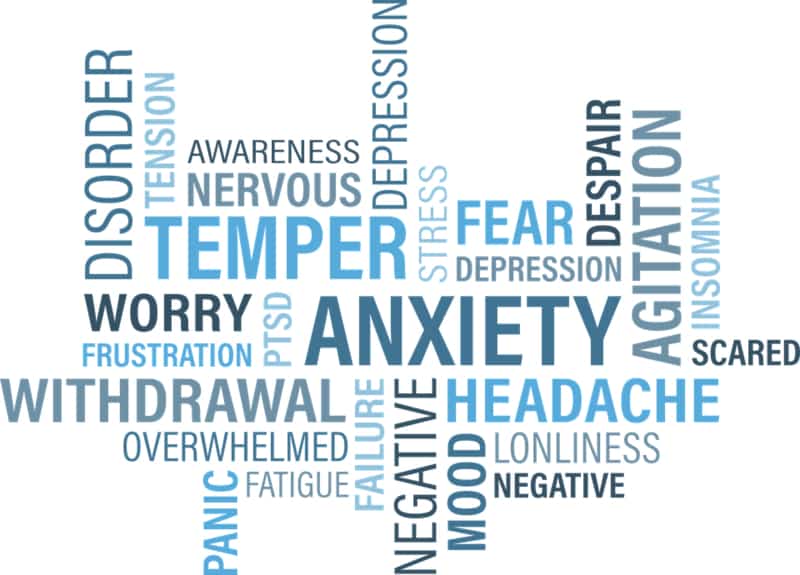Your children look to you to do everything from making a scraped knee better with a kiss to showing them the correct way to act in challenging situations. If you have an anxiety disorder, your children might not understand your condition — but they will emulate your behavior nevertheless.
If you don’t want your little ones to carry on negative habits that you acquired due to your disorder, an honest, yet age-appropriate, approach works the best. Explaining your condition is a start, and taking action to overcome your triggers gives them a positive example to follow. You can minimize their chances of your children developing anxiety while teaching them coping skills.
1. Identify Your Triggers
Some things strike terror into nearly any heart, like encountering an angry mama bear or catching wind of corporate layoffs. However, if you have PTSD, you could have specific triggers that make you flashback to a traumatic event. Identifying the situations that leave you feeling out of control of your emotions can help you develop coping mechanisms.
For example, if you survived an abusive relationship in the past, you could panic or go into defensive mode every time your current partner raises their voice. It doesn’t matter if they’re yelling at an official in a televised football game — the sound triggers the same chemical reactions in your body. Once you know what causes your palms to sweat and stomach grow queasy, you can avoid putting yourself in those circumstances or control your reactions more effectively.
2. Talk to Your Children About Your Disorder
Children understand more than they can put into words and explaining your disorder in an age-appropriate way lets them know that you can have a mental illness and still lead a healthy life. It also helps them to open up to you about any worries or fears they might have when they know you won’t find their concerns silly.
One technique you might use with younger children is to compare your anxiety to an ogre that lives in your brain and sometimes comes out to play. Give it a name, like George. That way, if you feel tears or a meltdown threaten, you can say, “Uh-oh. Looks like George picked today to pay a visit.” Once you teach them coping mechanisms, you can even ask what they suggest you do to deal with him.
3. Create an Emergency Plan
If your anxiety disorder is severe, you might experience times when a meltdown seems guaranteed. You must establish a plan for these eventualities to protect your mental health — and your children’s.
If you have a partner, you can create a code word that means, “I’m going to blow — I need to excuse myself before I do.” They can then take over minding the kids while you collect yourself. If you are a single parent, have a stash of “quiet time” activities at the ready. Have special coloring and puzzle books you only break out for these occasions. When all else fails, it’s okay to put on a cartoon for the kiddos while you sip some chamomile.
4. Adopt a Mindfulness Meditation Practice
Mindfulness meditation is a fabulous method of getting a handle on your racing thoughts. Sometimes, catastrophic thinking sweeps in so quickly and insidiously that you don’t consciously notice all the irrational messages you send yourself. Before you know it, “I made a mistake on that expense report” spirals into “I’m going to get fired, I’ll never find another job, and my family and I will end up homeless.”
Sitting quietly and focusing on your breath allows you to bring these thoughts into your conscious awareness. While you practice, become a neutral observer, letting your thoughts emerge naturally. Once your conscious mind recognizes these destructive ideas, it can reframe these thoughts in a more positive light.
5. Engage in Healthy Hobbies
Sometimes, it helps to take your mind off your worries, but escaping into the bottle or stuffing down your feelings with junk food will only leave you feeling worse. Cultivate healthy habits that you can do solo or with the entire family. Putter in the garden together. Get in the habit of taking a post-dinner walk. Break out the board games, or declare a quiet evening for reading books.
6. Remain Alert for Signs of Trouble in Your Kids
Like adults, children experience symptoms like trouble sleeping, restlessness and irritability when they feel anxious. If your child grows sullen or defiant, ask probing questions to find out what’s wrong instead of punishing them for having a bad attitude. Do contact your family physician if physical symptoms such as gastrointestinal upset or chronic sleeplessness occur. These could signal underlying anxiety that needs intervention, or they could result from other health issues.
7. Seek Professional Help
Finally, there is no shame in asking for help. Even tiny tots understand the need to go to a doctor when you get sick. If you feel that you can’t manage your anxiety on your own, reach out for professional help. If your children ask, you can explain that your brain is an organ like any other, and sometimes, things go wrong. However, you’re taking action to get better, and you hope they will do the same if they ever feel like it’s all too much.
Facing Your Anxiety Makes You a Better Role Model
Adults and children alike can struggle with anxiety, and facing your disorder makes you a better parent and sets a positive example. Show your little ones that you can overcome mental illness by communicating and taking proactive steps to manage your condition.


